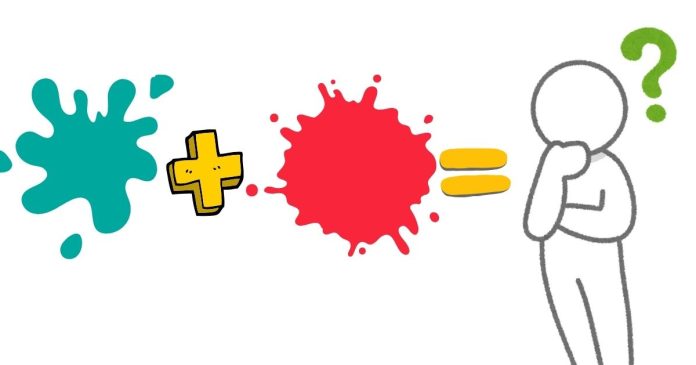Colors are all around us, shaping how we perceive the world. Whether you’re an artist, designer, or simply curious, understanding how colors interact can be both fun and enlightening. A common question that arises is: What color do green and red make? The answer depends on whether you’re mixing pigments (subtractive mixing) or light (additive mixing). Let’s dive into the science and art of this color combination!
The Basics of Color Mixing
Before we discuss green and red specifically, it’s important to understand how colors combine in different contexts.
- Additive Mixing (Light): This method is used in digital screens and involves blending light colors. The primary colors here are red, green, and blue (RGB). When these colors mix, they create white light.
- Subtractive Mixing (Pigments): This method is used in painting, printing, and other physical media. The primary colors in this context are cyan, magenta, and yellow. When pigments mix, they absorb (subtract) certain wavelengths of light, resulting in a new color.
Mixing Green and Red in Pigments
When mixing green and red pigments, the result is usually a shade of brown or gray. This outcome happens because green and red are complementary colors on the color wheel. Complementary colors tend to neutralize each other when combined, leading to a muted or desaturated color.
- Why Does It Turn Brown?
Green pigment absorbs red and blue light, while red pigment absorbs green and blue light. When combined, most of the light is absorbed, leaving behind a neutral tone like brown or gray. - Factors That Affect the Result:
- Proportions: Adding more red will result in a warmer brown, while more green will create a cooler brown.
- Pigment Quality: The type and quality of paint or pigment can also influence the final color.
Mixing Green and Red in Light
In the context of light, combining green and red results in yellow. This phenomenon is a key principle of the RGB color model used in digital displays.
- Why Does It Turn Yellow?
In additive color mixing, green light and red light combine to create a brighter color. Yellow is the result because the wavelengths of green and red light overlap, stimulating our eyes to perceive yellow. - Applications in Real Life:
- Televisions and computer screens use this principle to display vibrant colors.
- Stage lighting often combines colored lights to achieve the desired effect onstage.
Cultural and Psychological Significance of Green, Red, and Their Combinations
The combination of green and red carries symbolic meaning in various cultures:
- Christmas Colors: Green and red together are widely associated with the festive season. They symbolize life, renewal (green), and warmth or passion (red).
- Contrasting Colors: As complementary colors, red and green create high contrast, which makes them eye-catching when used in design or art.
When combined into muted tones like brown, they take on a different meaning, often symbolizing earthiness, warmth, or neutrality.
Using Green and Red in Art and Design
Understanding how green and red interact can help artists and designers make intentional choices in their work.
- Neutral Tones: By mixing green and red, you can create a range of natural browns and grays, perfect for landscapes or adding depth to portraits.
- Layering Colors: In painting, layering green over red (or vice versa) can create interesting textures and visual effects.
- Digital Design: In digital art, adjusting the intensity of green and red light can produce vibrant yellows or muted tones.
Experimenting with Green and Red
If you’re curious, try experimenting with green and red yourself! Here are a few activities:
- With Paint: Combine different proportions of green and red paint to see how the resulting brown or gray changes.
- With Light: Use colored bulbs or filters to blend green and red light and observe the yellow it creates.
- Digital Tools: Use a graphic design program to overlay red and green colors in both subtractive and additive modes.
Fun Facts About Green and Red
- Complementary Power: Green and red are located opposite each other on the color wheel, which makes them complementary. This is why they’re so visually striking when placed side by side.
- Science of Seeing: Our eyes contain photoreceptor cells called cones, which detect red, green, and blue light. When both red and green cones are stimulated, our brain perceives yellow.
- Nature’s Palette: In nature, the combination of red and green is often seen in plants (red flowers against green foliage) and fruit (red apples on green trees).
Conclusion
The color you get when mixing green and red depends on the medium you’re working with: pigments or light. In pigments, the result is usually a neutral brown or gray, while in light, it’s a vibrant yellow. Understanding these principles can enrich your creative projects and deepen your appreciation for the world of color.
Next time you’re painting, designing, or just observing the colors around you, think about the magic that happens when green and red come together!



